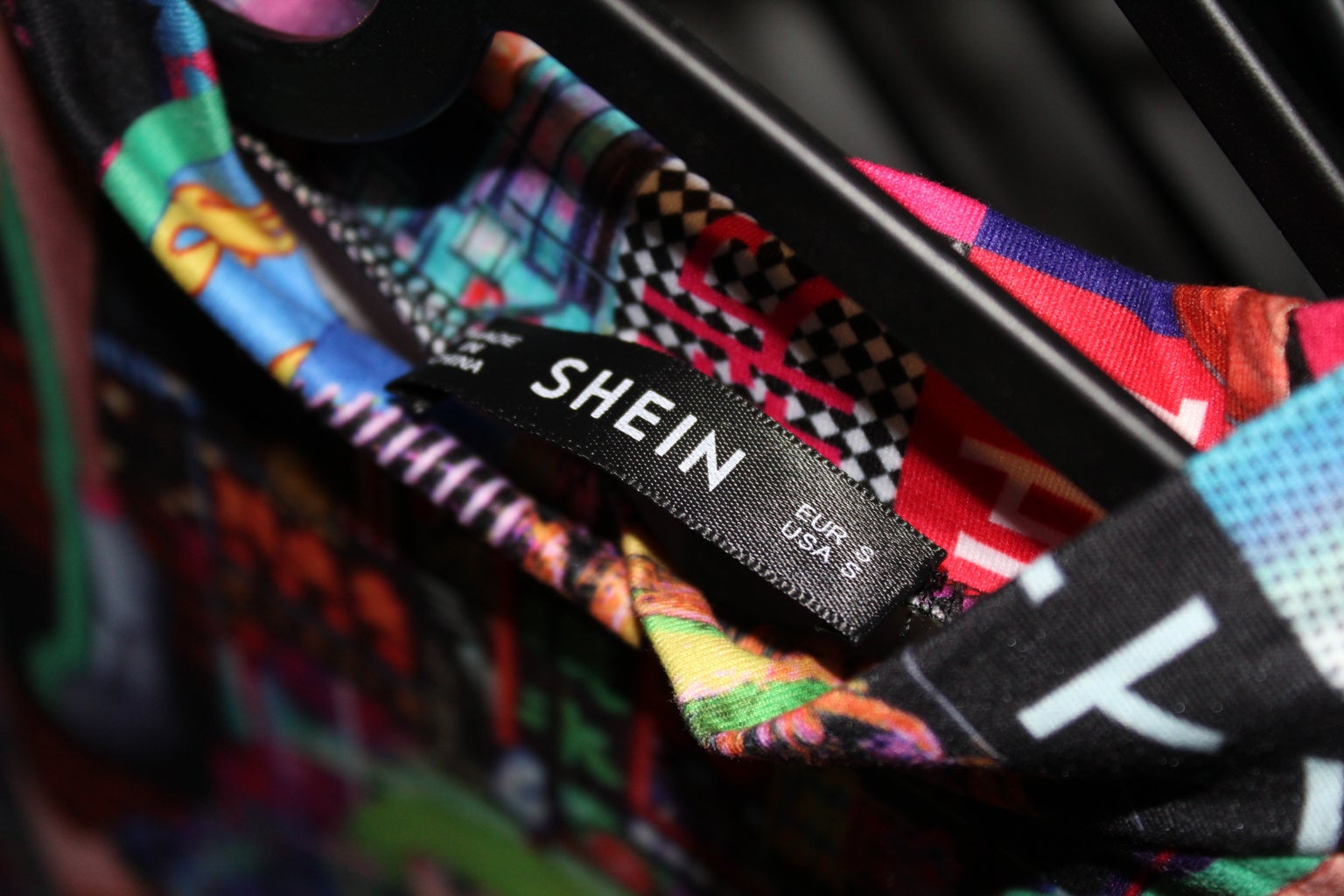Currently, there are more and more conversations about fast fashion, mass consumption, greenwashing and sustainability in the fashion industry. These terms are overwhelming, to say the least, but it’s important to acknowledge how it is affecting our world.
A lot of us are in college, therefore on a budget. My friends and I personally do not have the income to provide luxurious or designer items for ourselves. I used to sit in bed on TikTok and see trendy items from SHEIN or Amazon, add to my cart, and see how much I can get for only $40. I was amazed. I thought about how the clothing I bought would be so cute for the summer, and if it didn’t fit right, or got ruined, I wouldn’t care because it was so cheap. It is such an easy justification.
I am currently a Fashion Merchandising major and I learned in my very first semester how the fashion industry is the second most polluting industry in the world, next to oil. The terms fast fashion, mass consumption and sustainability have been drilled into my brain. So much so that I can not help but cringe when I hear people say, “oh, I got it from SHEIN.”. I understand why people do this though, their items are on-trend and are “discounted” so it gives the consumer the satisfaction of saving money. I am guilty of that as well, but we have to start somewhere.
Fast Fashion & Greenwashing..What does it MEan?
The term fast fashion has been more popular in recent years.
One minute you see an influencer or celebrity wearing a new style of garment and the next you know there are dupes of that same item sold by your favorite in-store or online retailers, such as Forever 21 or SHEIN.
Fast fashion is caused by the demand for surplus trendy clothing by consumers at a cheap price. See, the clothes being produced are mainly deemed as “fads” in the fashion cycle; fads are clothing trends that go out of style just as quickly as they came into style. Due to this, consumer demand for these trendy garments is high, but not high enough to splurge on said garments. We, as a community, believe that just because we have access to it, means we should buy it. The thrill of buying something on-trend at such a low price is higher than actually owning the product. Overconsumption by consumers leads to overproduction of products.
Once these clothes no longer serve a use to consumers or fall apart due to the cheap materials, most of the time they end up in landfills. The garment’s life ending in a landfill isn’t the only contribution it has to harm the environment.
Cheaply made garments are made of synthetic and manufactured fibers, such as polyester (which is basically plastic and is often wasted when it can be recycled). Harmful dyes, chemicals and solvents used to make these clothes are dumped into our waterways and have a dependency on non-renewable resources such as oil and can cause air pollution. There are so many more ethical issues regarding fast fashion, I can go on and on. Fast fashion is poisonous to our environment and society.
There are two types of companies I have noticed when looking at their sustainability habits. Some companies truly care about the environment and other ethical practices such as Patagonia. Then, those companies commit greenwashing.
Greenwashing is a false marketing strategy used by companies to promote their products as “eco-friendly” but does not supply the transparency required to prove that claim. This is a truly dangerous tactic because consumers who want a better environment get tricked by false marketing and are contributing to this toxic cycle. Numerous popular brands use this tactic, such as H&M, Urban Outfitters, SHEIN.
Brands will often go through a rebranding process (colors, brand image, etc.) to appear as a “green” company. For example, Urban Outfitters started a campaign called “UO Community Cares”, they claim to have been promoting sustainability since the ’70s, partnered with sustainable brands such Patagonia and used shopping bags made out of recycled material; therefore they are “sustainable”. Their OU Community Cares page is visually attractive and is promoting sustainability, but lacks evidence of their progress towards more sustainable practices.
“It uses some renewable energy in its direct operations to reduce its climate impact, but no meaningful action has been taken to reduce or eliminate hazardous chemicals. There is also no evidence it implements water reduction initiatives. You can do better for the planet, Urban Outfitters!” (Dockrill, 2021).
SHEIN is also extremely guilty of greenwashing, amongst other things. Let’s get into it.
WHat’s so Bad about Shein?
Oh, where to begin…SHEIN is a captivating brand. They manage hundreds upon hundreds of styles that can fit anyone’s aesthetic. Whether you prefer street style or editorial, SHEIN is almost guaranteed to have it.
Immediately going on to their site, I am bombarded with three different pop-up menus displaying discounts off of total purchases, free shipping after a certain amount or exclusive offers if I sign up for the emails. Once clicking off of each pop-up, there are numerous flashing sale signs and fast-changing advertisements about different campaigns and collaborations they are a part of. All the visuals and “exclusive sales” make it so justify a purchase.

When you receive an order from SHEIN, items come individually packaged in zip-lock-like bags that most people just throw away, which is extremely wasteful. Our Product/Our Plant is their environmental information page where they discuss their efforts to better the environment. They claim they are using recycled polyester, more efficient technology and have a safe working environment but lack proof and transparency of these practices.
“Of the 52,000 dresses currently listed on the site, just 64 are said to be made from recycled polyester” (Fuller, 2021).
SHEIN does pop-up shops on campuses where students can bring their unwanted clothing in exchange for SHEIN gift cards. The problem with SHEIN giving out gift cards is that it will only continue to increase the purchases made from the company. This is good for their company, but with SHEIN having such a high production rate as it is, it is almost impossible for them to be sustainable.
SHEIN has run into problems for selling racist & insensitive products and has been known to use unauthorized artwork. Overall, SHEIN is not a friendly brand and needs to be acknowledged as so.
How Can you SHop SUSTAINABLY?
- Thrifting or second-hand shopping
- This is the most obvious option but it really gives clothing a second chance. Thrifting provides the rush of finding an unique piece at a discounted price while also not being wasteful.
- Follow Sustainable Fashion accounts on social media
- I have truly learned a lot and re-thought my shopping habits after reviewing the content some of these accounts post.
- I personally recommend following: @consciousstyle, @Chnge and @fash_rev
- Interacting and sharing these posts can go a long way to educating yourself and others about sustainable fashion and over consumption
- Good On You
- Good On You is an organization that researches the credibility of a brand’s sustainable and ethical practices, along with giving the reader sustainable alternatives to mainstream brands.
- They give brands ratings of “We avoid”, “Not good enough”, “It’s a Start”, “Good”, and “Great” based on the impact the brand has on people, animals and the environment.
- Their website provides the viewer with their companies story, tip & guides for a sustainable lifestyle , explanation of their rating system, etc.
It’s so easy to think, “My purchases won’t make that big of an impact,” or, “People aren’t going to stop feeding into fast fashion, so why should I?” Little do you know how much you as a consumer control the fashion industry. That is why it is important to understand the danger regarding fast fashion and greenwashing.
Millennials and Gen Z are considered to be “non-brand loyal” generations, which means that if there is something that we don’t like about a brand, we simply won’t shop there. That doesn’t sound like such a big threat, but it is to major corporations. If enough of us call out said brands on their greenwashing bullshit and reduce our purchases from them. If they don’t pay attention to our voices, they will pay attention to their dropping numbers. Without us, they have no source of income.
We have to understand the power we hold not only as a consumer but as a community.




